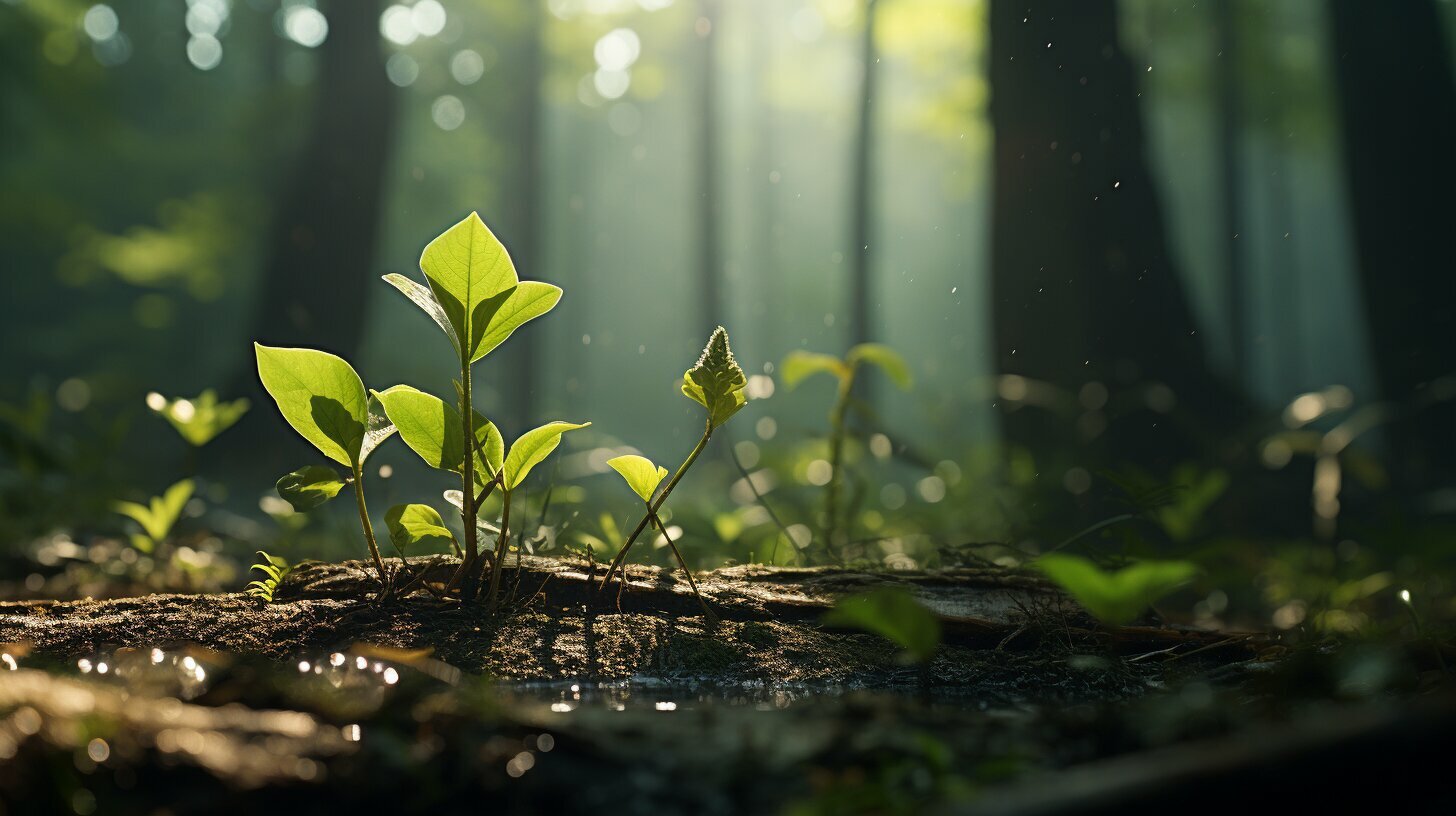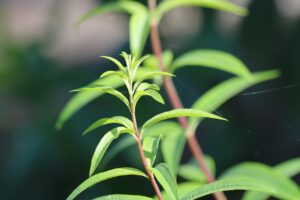Can Plants Live Forever? Today, we embark on a fascinating journey to explore the limits of plant life. As humans, we are constantly searching for ways to prolong our existence, but what about plants? Can they live forever? Are there immortal plant species out there? These are the questions that we’ll be seeking answers to in this article.
Plants have a remarkable ability to adapt to their environment, and some even seem to defy the natural cycle of life and death. We’ll be diving deeper into the concepts of plant longevity, immortal plants, perennial plants, and everlasting plants, so buckle up and let’s get started!
Key Takeaways
- Plants possess incredible adaptability and have evolved remarkable strategies to survive and thrive.
- Plant longevity is affected by various factors such as genetics, environmental conditions, nutrition, disease, and human intervention.
- Perennial plants are known for their ability to come back year after year, seemingly defying the natural cycle of life and death.
- While plants may not live forever in the traditional sense, they can endure for extended periods and possess incredible resilience and beauty.
Understanding Plant Lifespan
As I embark on exploring the question of plant immortality, it’s essential to first understand the typical lifespan of plants. While plants are not known to live forever, some species have longer lifespans compared to others.
Perennial plants, for instance, are known to come back year after year, making them immortal in a sense. They have developed unique adaptations to endure for extended periods, such as underground storage organs, deep roots, and protective layers on their bark.
Annual and biennial plants, on the other hand, grow, flower, and die within a single growing season or two. Their lifecycle is predetermined by genetics and environmental factors, limiting their lifespan.
There are also plants that seem to challenge the boundaries of time, such as the bristlecone pine, which can live for thousands of years. However, these plants are unique cases, and most plants have a much shorter lifespan.
Factors such as genetics, environmental conditions, and human intervention play a significant role in determining a plant’s lifespan. By understanding these factors, we can appreciate the complexity of plant life and the limits it faces.
In the next section, we will delve deeper into the concept of immortal plants and explore whether there are any true examples of plant immortality in nature.
Immortal Plants: Fact or Fiction?
The idea of plants that never die has captured our imagination for centuries. The notion of eternal plants, or those with plant immortality, has been explored in literature, mythology, and folklore.
But is there any truth to the concept of immortal plants? While there are some species that seem to have an incredibly long lifespan, none have been proven to be truly immortal. Plants, like all living organisms, eventually succumb to death.
However, some plants can survive for extended periods, even in unfavorable conditions. These plants may appear dead, but they can regenerate new growth when the environment becomes more favorable.
Examples of plants that can seemingly rise from the dead include the Resurrection Plant (Selaginella lepidophylla), which can survive for years without water, and the Titan Arum (Amorphophallus titanum), which can survive for decades before blooming its spectacular flower.
“While there are some species that seem to have an incredibly long lifespan, none have been proven to be truly immortal.”
The concept of plant immortality also raises philosophical questions about the nature of life and death. Plants may not have a consciousness or experience emotions like humans do, but they still play a crucial role in the ecosystem, supporting the food chain and providing oxygen for other living organisms.
In conclusion, the idea of immortal plants may be a romanticized concept, but it is still fascinating to consider the possibility of perpetual life in the plant kingdom. While we may never find a truly immortal plant, we can still appreciate the resilience and adaptability of plant life in all its forms.
Unveiling Plant Longevity Secrets
Plants are an essential part of our ecosystem, playing a vital role in sustaining life on earth. Understanding the secrets of plant longevity is crucial to preserving our natural world. In this section, we’ll explore some of the strategies plants use to increase their lifespan and adaptability.
Genetics
The genetic makeup of plants determines their lifespan and adaptability to different environments. Some plants have developed genetic mutations that make them more resilient to harsh weather conditions, pests, and diseases. Such adaptations help plants to survive and thrive in conditions that would be deadly to other organisms. Additionally, plant geneticists have been able to extend plant lifespans by modifying genes responsible for specific traits in plants. The research into genetic manipulation of plant lifespans is still in its infancy, but the potential benefits to the agricultural industry could be enormous.
Environmental factors
The environment in which plants grow is a key factor in determining their lifespan. The availability of water, sunlight, and nutrients plays a significant role in determining plant health and life expectancy. Plants growing in favorable environmental conditions tend to live longer than those growing in harsher conditions. Some plants have also developed specific adaptations to survive in unfavorable conditions, including succulents that store water in their leaves and cacti that can survive for months without water.
Maintenance
Proper plant maintenance is vital to extending plant lifespan. Regular pruning and watering help keep plants healthy and free from pests and diseases. Plants should also be fertilized regularly to ensure they have the necessary nutrients to grow and thrive. Additionally, keeping plants in ideal growing conditions, such as the correct temperature and humidity, can help extend their lifespan.
Conclusion
Plants are remarkable organisms that have evolved to thrive in a wide range of environments, adapting to survive over millions of years. Understanding the secrets of plant longevity is essential to ensuring the continued health and sustainability of our natural world. Through genetic research, environmental management, and proper maintenance, we can help extend the lifespan of the plants around us, from the smallest flower to the mightiest tree.
The Quest for Eternal Plants
As a curious journalist, I have always been fascinated by the idea of eternal life. While the notion of immortality for humans remains a mystery, scientists have been exploring the possibility of eternal life for plants.
Plants that never die, also known as immortal plants, are a subject of ongoing research. Botanists and geneticists have been studying the characteristics of these plants, hoping to uncover the secrets of their longevity. By understanding these factors, they hope to create plants that can withstand the test of time.
The concept of eternal plants goes beyond mere lifespan. An eternal plant is one that can keep growing indefinitely, with no signs of decline. It can also reproduce indefinitely, passing on its genes to future generations. While no plant has been proven to be truly immortal, there are examples of plants that have survived for thousands of years.
Plant longevity is a complex phenomenon. It’s influenced by various factors, including genetics, environmental conditions, and human intervention. Some plants have adapted to challenging environments, such as arid deserts, and have developed mechanisms for water conservation. Others have evolved to withstand extreme temperatures and resist disease.
One of the most famous examples of an eternal plant is the bristlecone pine tree. These trees can live for thousands of years, thanks to their ability to adapt to harsh mountain environments. Another example is the clonal colony of quaking aspen trees in Utah, which is estimated to be over 80,000 years old.
While the quest for eternal plants is ongoing, scientists have made significant progress in understanding the factors that contribute to plant longevity. By studying the genetics of long-lived plants, they hope to create more resilient crops and improve agricultural yields.
The study of eternal plants reminds us of the remarkable resiliency of the natural world. While we may never achieve immortality, plants demonstrate that even in the face of adversity, life finds a way to endure.
Perennial Plants: The Closest to Immortality?
Perennial plants have fascinated me for years due to their ability to survive harsh climatic conditions and multiple growing seasons. They come back year after year, seemingly defying the natural cycle of life and death. While they may not be immortal, they are the closest we have to plants that live forever.
Perennial plants have a lifespan that exceeds that of annual or biennial plants. They can live for many years, and some have been known to survive for centuries. Their longevity is due to their remarkable adaptations that enable them to endure for extended periods.
Perennial plants have evolved several strategies to survive, including developing deep root systems that enable them to access water and nutrients from the soil. They also have mechanisms to store energy during the growing season, which they use to support new growth in the following growing season.
One of the fascinating things about perennial plants is that they have evolved to be resistant to environmental stressors such as drought, disease, and pests. They can also persist in low light conditions, making them ideal for shady areas where other plants may struggle to grow.
The lifespan of a perennial plant depends on various factors such as genetics, environmental conditions, and maintenance. Some perennial plants can live for decades, while others may only last for a few years. However, with the right care and conditions, many perennial plants can live for a very long time.
In conclusion, while perennial plants may not be immortal, they are the closest we have to achieving plant immortality. Their remarkable ability to endure and persist in adverse conditions is a testament to the resilience and beauty of the plant kingdom.
Factors Affecting Plant Longevity
Plant lifespan can be influenced by various factors, both internal and external. Understanding these factors can help us appreciate the complexity of plant life and learn how to care for them better. Let’s examine some of the critical aspects affecting plant longevity:
Genetics
Just like humans, plants inherit their traits and characteristics from their parents. Some plants are naturally predisposed to longevity due to certain genes that govern their growth and development. However, genetics alone cannot determine a plant’s lifespan; it only provides a foundation that can be influenced by other factors.
Environmental Conditions
The environment plays a vital role in plant growth and survival. Temperature, light, water, and soil quality are all critical factors that can affect a plant’s lifespan. Extreme conditions, such as drought, heavy rains, or frost, can shorten a plant’s life, while moderate conditions with the right balance of nutrients and water can promote longevity.
Nutrition
Plants require various nutrients, such as nitrogen, phosphorus, and potassium, to grow and thrive. A lack of essential nutrients can weaken a plant’s immune system, making it more susceptible to diseases, pests, and other stressors that can shorten its lifespan.
Disease and Pests
Plant diseases and pests can significantly impact a plant’s longevity. Fungal and bacterial infections, for instance, can damage a plant’s tissues and inhibit growth. Similarly, pests such as aphids, spider mites, and caterpillars can feed on a plant’s leaves or stem, reducing its ability to produce energy and reducing its lifespan.
Human Intervention
Human activities can also affect plant lifespan. Improper pruning, overwatering, or using chemical pesticides and fertilizers can harm plants and reduce their lifespan. Conversely, proper care and maintenance, such as providing adequate soil drainage, regular watering, and fertilization, can promote longevity and help plants live longer.
By understanding the various factors that influence plant longevity, we can learn to appreciate and care for our plants better. Whether it’s through genetic engineering, better environmental management, or improved maintenance practices, we can help our plants live longer, healthier lives and enjoy their beauty and benefits for years to come.
Conclusion
After diving deep into the mysteries of plant longevity and immortality, I have gained a newfound appreciation for the resilience and adaptability of the plant kingdom. While plants may not live forever in the traditional sense, they have evolved remarkable strategies to survive and thrive in their respective environments.
Throughout this article, we have explored the concept of plant lifespan and the characteristics of perennial plants, which have longer lifespans compared to annual or biennial plants. We have also examined the notion of immortal plants and whether there are any true examples of plant immortality in nature.
Furthermore, we have uncovered the secrets of plant longevity, including the unique characteristics and adaptations of plants that enable them to endure for extended periods, the impact of genetics and environmental factors on plant lifespan, and the ongoing quest for eternal plants.
The Limits of Plant Life
While we cannot disregard the natural limits of plant life, we can appreciate the complexity and diversity of the plant kingdom. Through proper care and maintenance, we can help extend the lifespan of plants, allowing us to enjoy their beauty and benefits for longer periods.
Ultimately, the pursuit of plant immortality will continue to inspire and fascinate scientists and botanists for years to come.
So, can plants live forever? While the answer may be no, the journey to uncover their secrets and explore their remarkable adaptations is undoubtedly worth undertaking.
FAQ
Q: Can plants live forever?
A: While plants have impressive longevity, they do not live forever in the traditional sense. However, some plants, such as perennial plants, can live for many years, defying the natural cycle of life and death.
Q: What are immortal plants?
A: The concept of immortal plants refers to plants that seem to never die. While true immortality is not observed in plants, there are examples of perennial plants with incredibly long lifespans that are often referred to as “immortal” due to their resilience and longevity.
Q: What are perennial plants?
A: Perennial plants are plants that live for more than two years. They have the ability to endure through different seasons, regrowing foliage and flowers each year. Perennial plants are often associated with longevity and can live for many years, giving the illusion of immortality.
Q: Are there plants that never die?
A: While no plants are truly immortal, there are some species that have extremely long lifespans and can survive for centuries. Examples include the bristlecone pine tree, which can live for thousands of years, and the giant sequoia tree, which can live for over 3,000 years.
Q: What factors influence a plant’s lifespan?
A: Several factors can influence a plant’s lifespan, including genetics, environmental conditions, nutrition, disease, and human intervention. These factors play a role in determining how long a plant can live and how well it can adapt to its surroundings.
Q: Can plants achieve immortality?
A: While plants cannot achieve immortality in the sense of living forever, they have remarkable adaptations that allow them to survive and thrive for extended periods. Through genetic variations, environmental adaptations, and the ability to reproduce, plants showcase incredible resilience.
Q: Is plant longevity solely determined by genetics?
A: Genetics is one of the factors influencing a plant’s longevity, but it is not the sole determinant. Environmental conditions, including soil quality, temperature, and moisture levels, also play a significant role in a plant’s ability to live longer. Additionally, proper care and maintenance can contribute to a plant’s overall health and lifespan.
Q: What is the role of human intervention in plant longevity?
A: Human intervention, such as proper watering, fertilizing, and pruning, can greatly impact a plant’s longevity. By providing optimal care and creating a favorable environment, humans can help plants thrive and potentially extend their lifespan.




